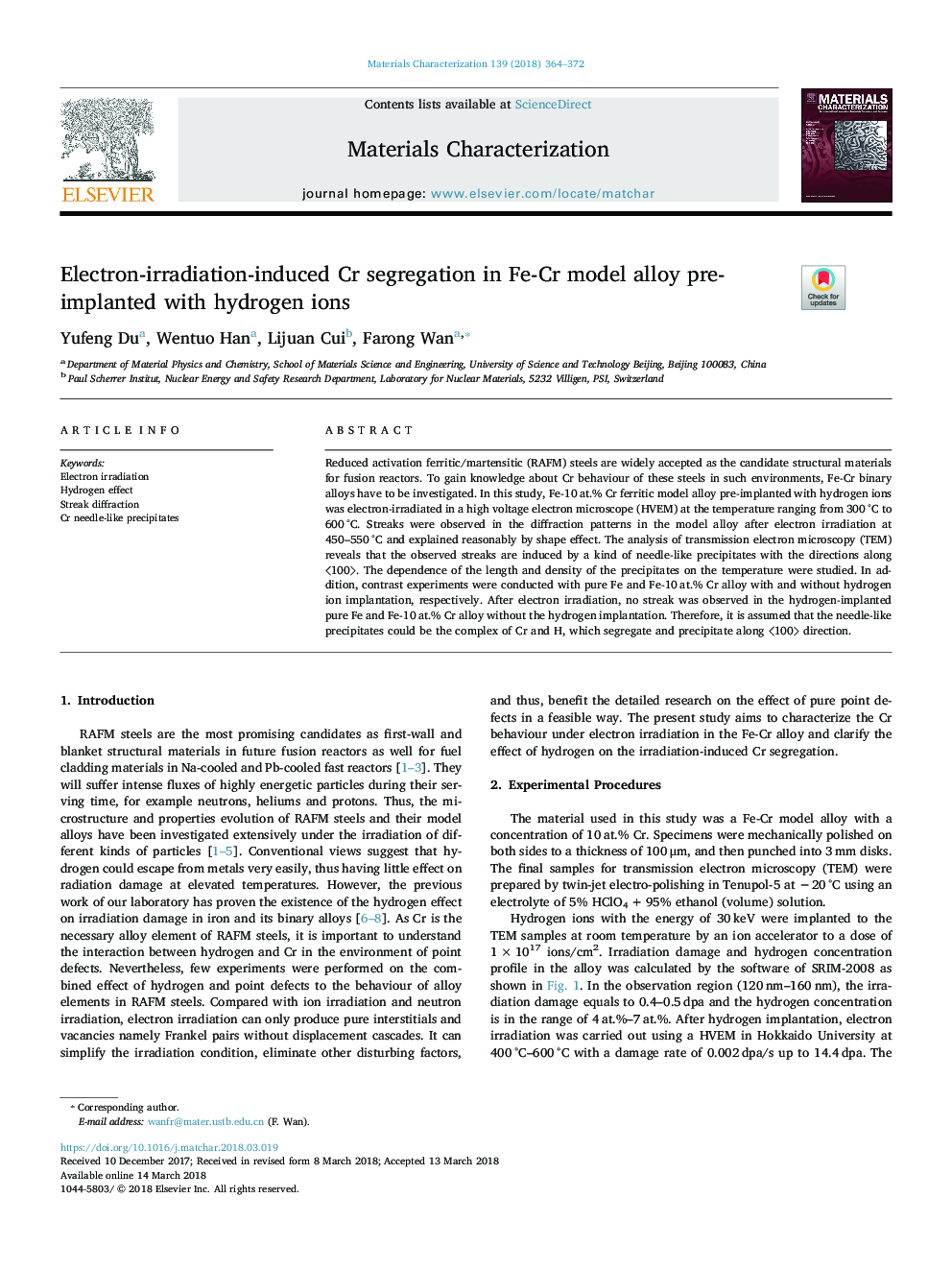| Article ID | Journal | Published Year | Pages | File Type |
|---|---|---|---|---|
| 7969321 | Materials Characterization | 2018 | 9 Pages |
Abstract
Reduced activation ferritic/martensitic (RAFM) steels are widely accepted as the candidate structural materials for fusion reactors. To gain knowledge about Cr behaviour of these steels in such environments, Fe-Cr binary alloys have to be investigated. In this study, Fe-10â¯at.% Cr ferritic model alloy pre-implanted with hydrogen ions was electron-irradiated in a high voltage electron microscope (HVEM) at the temperature ranging from 300â¯Â°C to 600â¯Â°C. Streaks were observed in the diffraction patterns in the model alloy after electron irradiation at 450-550â¯Â°C and explained reasonably by shape effect. The analysis of transmission electron microscopy (TEM) reveals that the observed streaks are induced by a kind of needle-like precipitates with the directions along ã100ã. The dependence of the length and density of the precipitates on the temperature were studied. In addition, contrast experiments were conducted with pure Fe and Fe-10â¯at.% Cr alloy with and without hydrogen ion implantation, respectively. After electron irradiation, no streak was observed in the hydrogen-implanted pure Fe and Fe-10â¯at.% Cr alloy without the hydrogen implantation. Therefore, it is assumed that the needle-like precipitates could be the complex of Cr and H, which segregate and precipitate along ã100ã direction.
Keywords
Related Topics
Physical Sciences and Engineering
Materials Science
Materials Science (General)
Authors
Yufeng Du, Wentuo Han, Lijuan Cui, Farong Wan,
